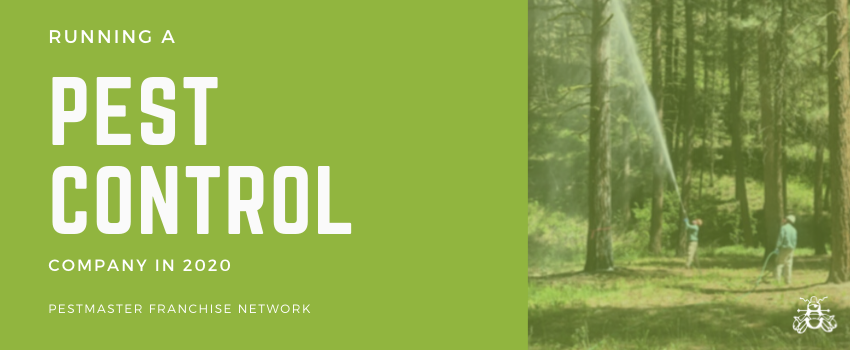Running A Pest Control Business In 2020: Debunking The ‘Insect Armageddon’ Theory

Running a pest control business in 2020 makes sense (and dollars!). Today’s post debunks the “Insect Armageddon” theory with new research by the International Pest Control association, then highlights 4 factors driving service demand to new heights in 2020.
What Is The “Insect Armageddon” Theory?
For many Americans, the “Insect Armageddon” theory first came to light in a 2018 article published by the New York Times. Therein, Sune Boye Riis, a high school science and math teacher, bemoaned the apparent decline in insect activity near his home north of Copenhagen in 2016.
Riis’ experiences prompted research by the Natural History Museum of Denmark, which involved a joint effort of the University of Copenhagen, Aarhus University, and North Carolina State University, to quantify the disorienting sense that bug populations were decreasing. During their literature review, Riis and his fellows researchers uncovered another study published by an obscure German entomological society, which claimed that German nature reserves had lost 75% of its flying insects over 27 years. This soon became the sixth-most-discussed scientific paper of 2017, with headlines around the world warning of an “insect Armageddon.”
Understandably, this figure is concerning to investors eyeing pest control businesses in 2020 and beyond. If the insect populations decrease, demand for flying insect-related vector health controls and treatments drop along with it. And while the Pestmaster model is resilient, thanks to our broad scope of services and animal controls, not all brands can say the same.
Pest Control Business Research Shows No Sign Of Declining Insect Service Calls Or Populations
Though it produced plenty of clickbait media coverage and general “investment anxiety,” the Insect Armageddon theory doesn’t hold water, according to a new study by the International Pest Control association.
According to a new IPC report published February 2020, researchers who set out to test the widespread theory “found no evidence for insect Armageddon.” Instead, they found that flying insect populations experienced peaks and troughs over a 50-year period. Focusing on the “biomass” (i.e. combined weight) of flying moth populations, researchers revealed that “there is around twice the combined weight of moths in the present day compared with the 1960s.”
“Our study does not support the narrative that insects are vanishing en masse before our eyes,” writes lead author Dr. Callum Macgregor from the Department of Biology. “There has been a net increase in biomass over the last 50 years.”
These findings fly in the face of “Insect Armageddon” proponents, and highlight the enduring value of flying insect controls, particularly since pesticides were not believed to contribute to the “trough” periods.
Running A Pest Control Business In 2020: Resilient Demand For Essential Service Supports Big ROI
With the “Insect Armageddon” panic put to rest, the Pestmaster opportunity is more valuable than ever. Here’s a few of the factors underpinning our resilient demand in 2020:
- The pest control industry is included as part of America’s essential critical infrastructure designation, which ensures our franchise owners’ business continuity, even in the event of a “second wave” of COVID-19 resulting in further lockdowns and mandated business closures
- Pest control populations continue to increase across the board, driving up demand for the majority of treatments and vector health controls (read more on the Pestmaster Pest Control Facts and Figures page)
- COVID-19 is increasing the demand for vector health controls and general quality-of-life controls as more Americans shelter-in-place
- New development and construction is creating huge demand for termite treatments nationwide
Learn More About Running A Pest Control Business With Pestmaster
Call 800-525-8866 or take a virtual tour of Pestmaster to learn more about starting a Pestmaster pest control business.
Back

















